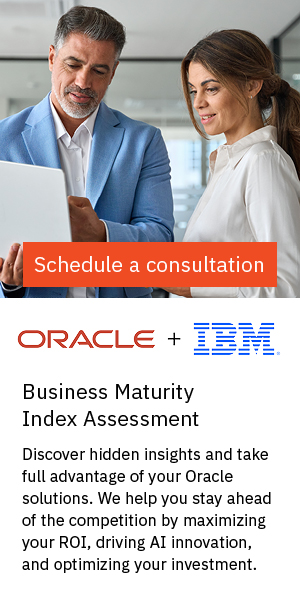Which company is the Switzerland of AI? Why have AWS and Microsoft failed on the AI front? Who is leading in artificial intelligence? Find out with Holger Mueller, VP and principal analyst at Constellation Research.
It’s time to look at one of the most disruptive technologies that is just around the corner in enterprise tech: artificial intelligence (AI). While I don’t think general AI adoption has been achieved, we have made massive progress on machine learning (ML). So, writing about AI means primarily discussing ML, with a tiny bit of AI on the side.
Infinite computing is the backdrop
We live in the era of ‘infinite computing’, on which I have researched and written extensively. For all practical purposes, the key computing resources – networking, storage and computing – have become infinite thanks to the cloud. Across the five layers of infinite computing, ‘infinite connectivity’ is the most integrated function in today’s world. We consume data and expect high quality video conference connections anywhere in the world at no, or a very manageable, cost.
The next layer, ‘infinite insights’, is a reality for countless enterprises thanks to the revolution of Apache Hadoop style technologies (most recently referred to as lakehouses). Unfortunately, BigData developed a bad reputation and slowed progress on infinite insights – to the detriment of enterprises unable to integrate AI automation to the expected progression in the 2020s. Even fewer enterprises have dug into the third layer of ‘infinite compute’, in which computers are used to run AI on their data.
AI will have the ability to take over for human, should they choose to give AI the authority.
Enterprises mastering the insights and compute level are ready for ‘infinite machine learning’. Machine learning automates, improves or suggests outcomes for any business process, assuming all enterprise process data is part of the infinite insights layer. In a few years, enterprises will be able to use ‘infinite deep learning’ – or self-driving AI – to effectively look at data and business outcomes. In this final layer, AI will have the ability to take over for humans, should they choose to give AI the authority.
Unfortunately, BigData developed a bad reputation and slowed progress on ‘infinite insights’.
Cloud is the AI platform
The cloud is a key enabler for enterprises, as it turns capital spending into variable cost and enables enterprises to only pay for what they use. The art of using the cloud is tying cloud usage to the level of business – when business is up, enterprises pay more for cloud; when business is down, enterprises pay less. So, when a new technology comes along and an enterprise is uncertain of the extent it will be used, does it make sense to budget for the hardware, allocate time to train employees on operations and then see how much it might be used? No, enterprises should look at a consume-as-you-go platform for AI, which is available in the cloud.
The other key aspect, which by now is a commonly accepted basis of AI success, is using data to determine the success of AI. When software does not include the data critical for AI, it cannot provide the answers enterprises want and need.
Enterprises not taking advantage of AI will struggle to remain relevant towards the end of the decade.
Handicapping the key AI cloud vendors
Much has been said and done about AI’s impact on enterprises. The long anticipation phase is ending, and the benefits are becoming real – so real that enterprises not taking advantage of AI will struggle to remain relevant towards the end of the decade. The cloud is essential for fuelling the move to AI, as it enables infinite insights (the unlimited, economic data storage of all things digital in an enterprise, without prior knowledge of queries to the data, as fuelled by Hadoop technologies) and infinite computing (the ability to ramp up and down computing infrastructure to fuel AI processes to the volume enterprises need).
For cloud vendors to be successful, their products need the following key capabilities.
1. Data capability supporting AI strategy
2. Efficient computer hardware to train and operate AI models
3. An AI platform allowing efficient creation of AI applications
Now, let’s take a look at the top five cloud players (in alphabetical order):
• Amazon is playing catch-up but remains a key competitor
There is only one area where Amazon Web Services (AWS) has fumbled: AI. But AWS management realised they held too long to the belief AI was merely a linear regression tool exercise and are realigning AI prioritisation. AWS has all the data capabilities needed for a successful AI strategy; the only concern is on the computer hardware side. The company though has launched Graviton, and, at time of writing, is likely to announce its third iteration of the custom AI chip at its yearly ‘re:Invent’ conference.
On the AI platform side, AWS offers SageMaker, a powerful and popular platform well-established with AWS customers. Unsurprisingly, when an enterprise wants to build its AI on AWS, there is no way around SageMaker.
There is only one area where Amazon Web Services has fumbled: AI.
• Google is clearly in the lead
Among the vendors listed, Google is far ahead due to the nature of its other businesses. AI, speech recognition and language translation have been the main game for Google over the past few years. The result is likely a three-year lead when it comes to the infinite compute layer, with Google’s Tensor Processing Unit in its fourth version. Google’s platform framework, TensorFlow, is the most adopted in the market. As an acknowledgment of Google’s leadership, TensorFlow models are supported by and run on AWS as well. On the data side, Google has a mature platform differentiated by BigQuery Omni. BigQuery Omni retrieves data residing on other cloud platforms, helping enterprises avoid data egress fees and acknowledging the reality of data gravity.
• Microsoft keeps kicking the can down the road
Microsoft got somewhat lost on the AI side, banking on its work for Microsoft Bing that ultimately did not deliver. Microsoft also had to abandon its smart home device strategy, likely due to lack of quality and/or the footprint of its speech AI.
Microsoft has a suitable data platform, Azure Databricks (of the successful Databricks vendor, in which Microsoft holds a stake). Redmond also has proficient AI capabilities but has not tapped into the Visual Studio developer community. But the real area for concern is that Microsoft is still not making custom silicon for its AI algorithms. Microsoft has done significant work around ethical AI/responsible AI, which reflects itself in the offerings, but this has not helped Microsoft’s overall AI capabilities.
Microsoft got somewhat lost on the AI side, banking on its work for Bing.
• Nvidia is the wild card – and Switzerland
Nvidia experienced a remarkable growth phase, powered by the similarity of graphics cards and AI vector algorithms, most prominently used in neural networks. Nvidia offers the option to run AI on-premise, which some enterprises still prefer for performance, data privacy and cloud-phobic reasons.
At the same time, given its popularity, Nvidia’s platforms are available in all large clouds, allowing enterprises to move AI training and execution. Nvidia has an attractive AI platform as well, although somewhat lacking on the data management side when compared to the top three cloud vendors. Nvidia is the only vendor offering customer training and operating models on both the three major cloud platforms and on premise, making it the ‘Switzerland of AI’.
Nvidia is the only vendor for the three major cloud platforms and on premise, making it the ‘Switzerland of AI’.
• Oracle is just at the beginning, plays the Nvidia card
Oracle has executed a remarkable strategy to stay relevant and become an attractive cloud vendor. But it has stayed very quiet on the AI side, likely motivated by founder Larry Ellison’s (rightful) scepticism towards the ability to create general AI, preferring to side with the ‘autonomous’ approach.
To no surprise, Oracle announced a close partnership with Nvidia at its recent CloudWorld conference. This is good news for Oracle customers, who often hold out for the on-premise side with Oracle’s Exadata platform. Running Nvidia adjacent to Oracle data is key to enabling relevant AI applications. In its new database offering, MySQL HeatWave, Oracle just added a lakehouse, which demonstrates significant progress on this front as well.
Oracle has stayed very quiet on the AI side, likely motivated by founder Larry Ellison’s (rightful) scepticism towards general AI creation.
The AI race takeaways
CxOs must understand the core differences between major cloud and AI platform players. It is key to comprehending their organisational DNA and charting the trajectory of their AI offerings. Using this as a lens for comparison, Google is unlikely to lose its AI crown, or it would go out of business (which would be very noticeable). All developers and early data scientists use and love AWS. Microsoft is used by nearly all enterprises and maintains a unique AI angle with its focus on productivity. Nvidia offers portability, and Oracle is slowly joining the AI game.
All vendors bring distinctive value propositions to enterprises – choose wisely!






